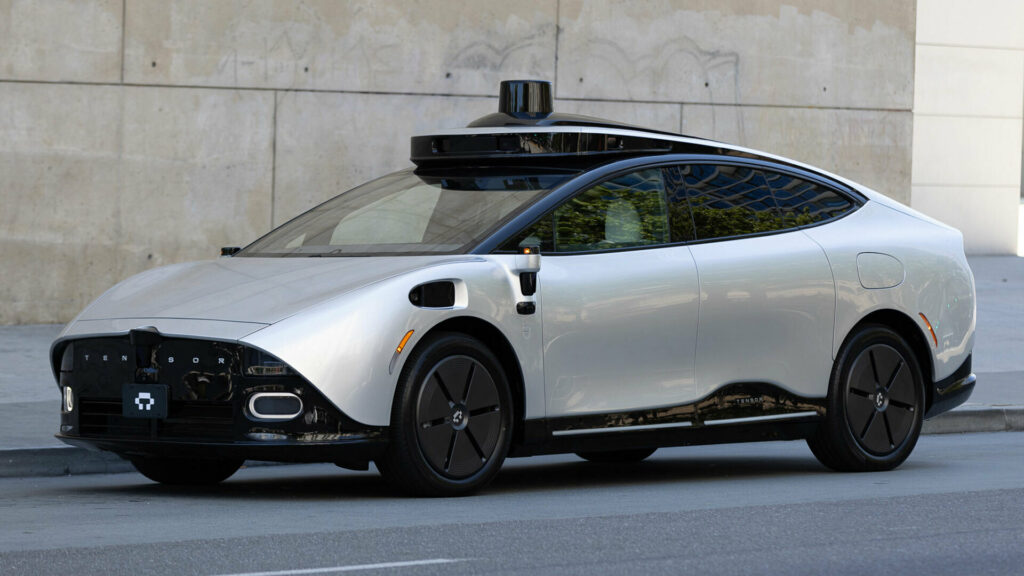Tensor Introduces an Autonomous Car for Private Use
Unlike many companies focused on robotaxis, Tensor has introduced the first fully autonomous car for private owners. However, some aspects of the presentation raise questions – the company did not provide a full press release, which may indicate a rush in development.
From the available information, it is known that the model is a luxury crossover with an unusual front-end design, equipped with sensors and SignalScreens for visual communication with other road users. The car features aerodynamic wheels, digital mirrors, and coach doors for easy entry.
Cabin Technologies
The interior is equipped with a retractable steering wheel and pedals, as well as numerous screens for the driver, passengers, and entertainment. Features include a heated steering wheel, ventilated seats with massage, 128-color ambient lighting, and wireless charging devices.
The company states that the car is equipped with advanced artificial intelligence capable of handling complex requests, for example: “Pick up mom from home and bring her here.” All data is processed locally, but the internet connection leaves security questions open.
Autonomy and Electric Powertrain
The car received an electric powertrain with a 112 kWh battery that charges from 20% to 80% in 10 minutes. The autonomous driving system includes over 100 sensors: cameras, lidars, radars, and other sensors. A special cleaning system is provided to protect the sensors.
Production will begin in 2026 at the VinFast plant in Vietnam. The car is planned to be supplied to Europe, the USA, and the UAE. Tensor is also collaborating with Marsh to develop a special insurance policy for autonomous cars.
Despite ambitious claims, many technical details remain unclear. The project’s success will depend on the real capabilities of autonomous driving and the market’s readiness for such innovations. It will be particularly interesting to see how the company addresses safety and regulatory issues in different countries.


 by
by 
